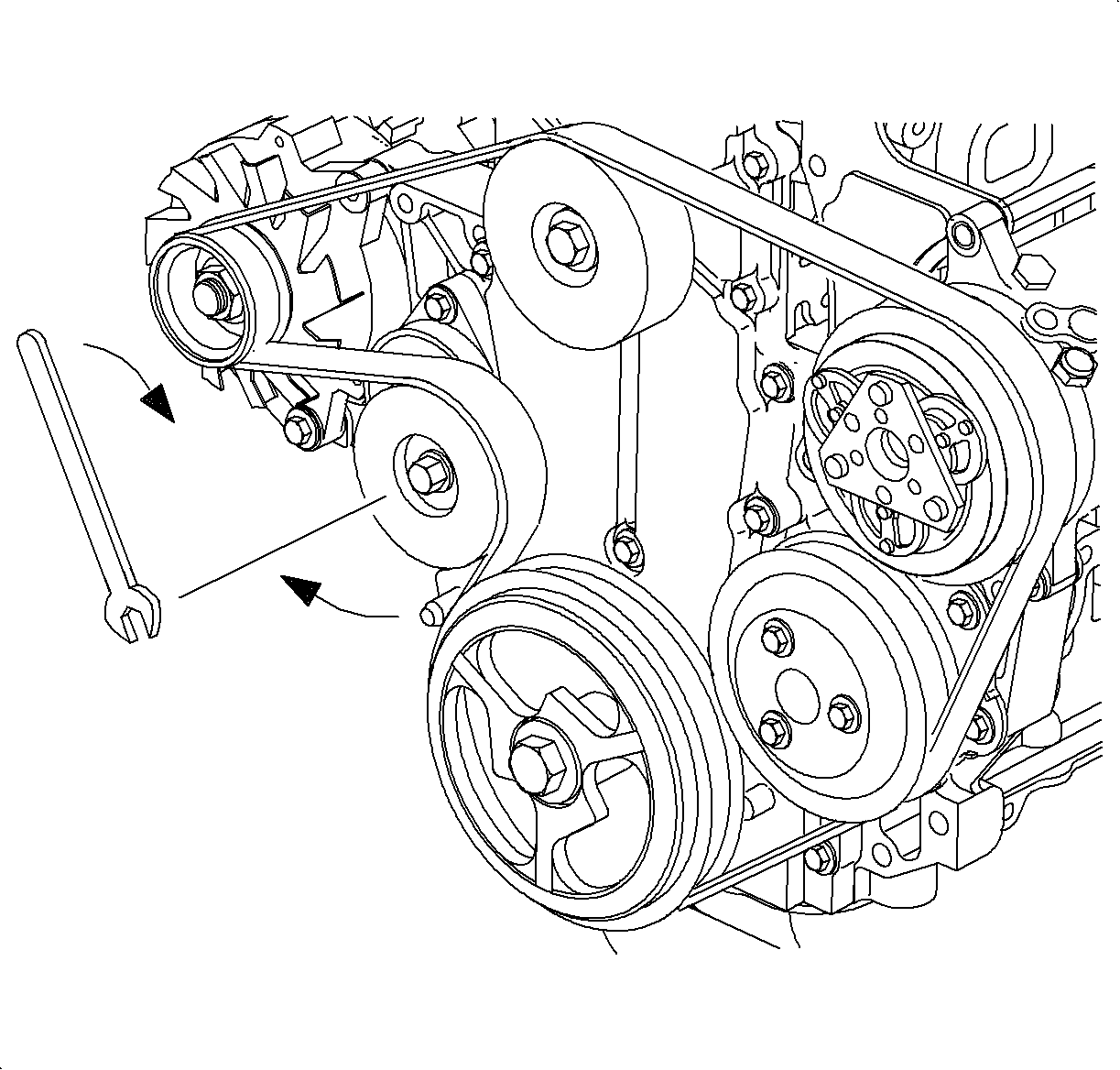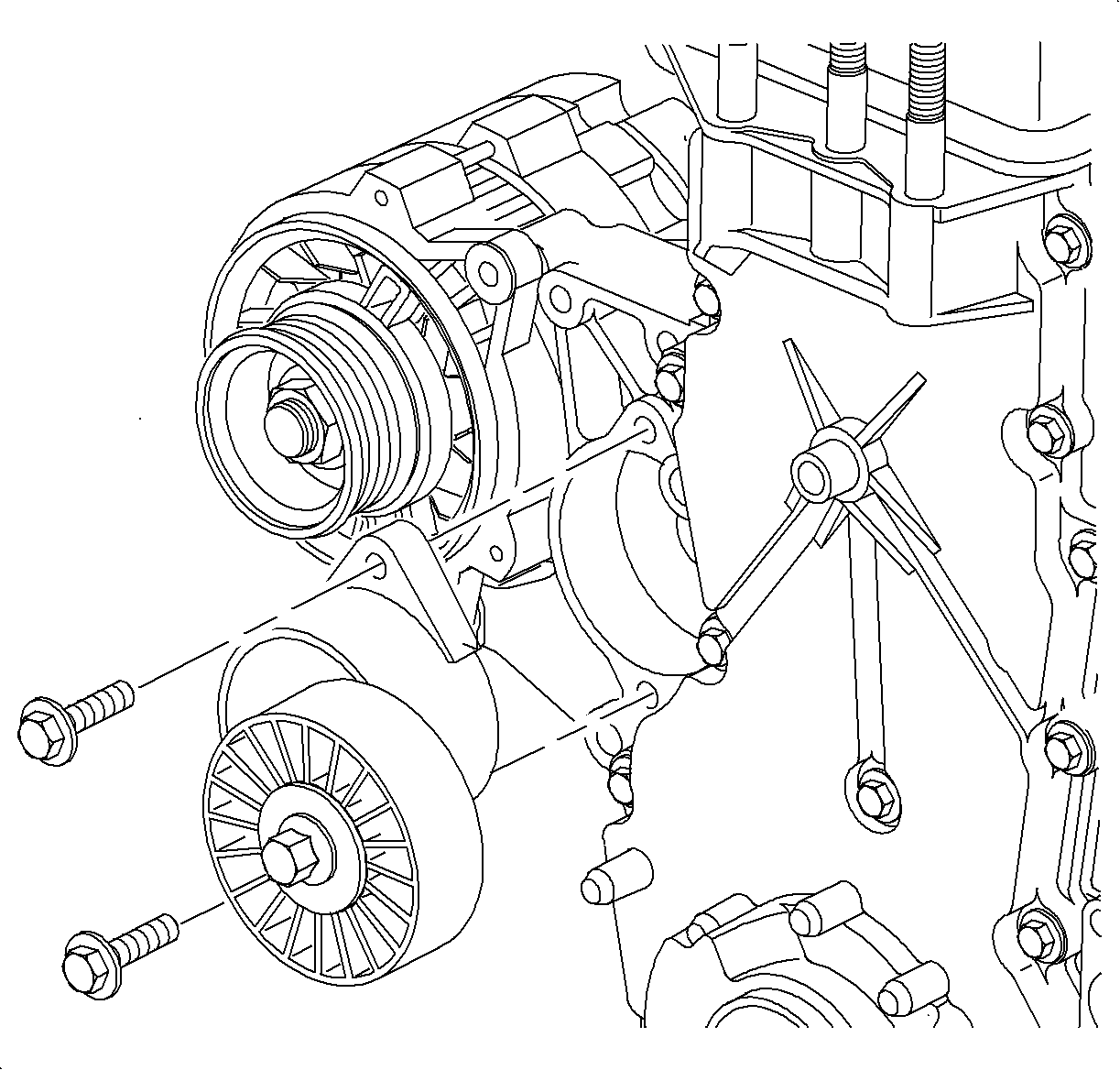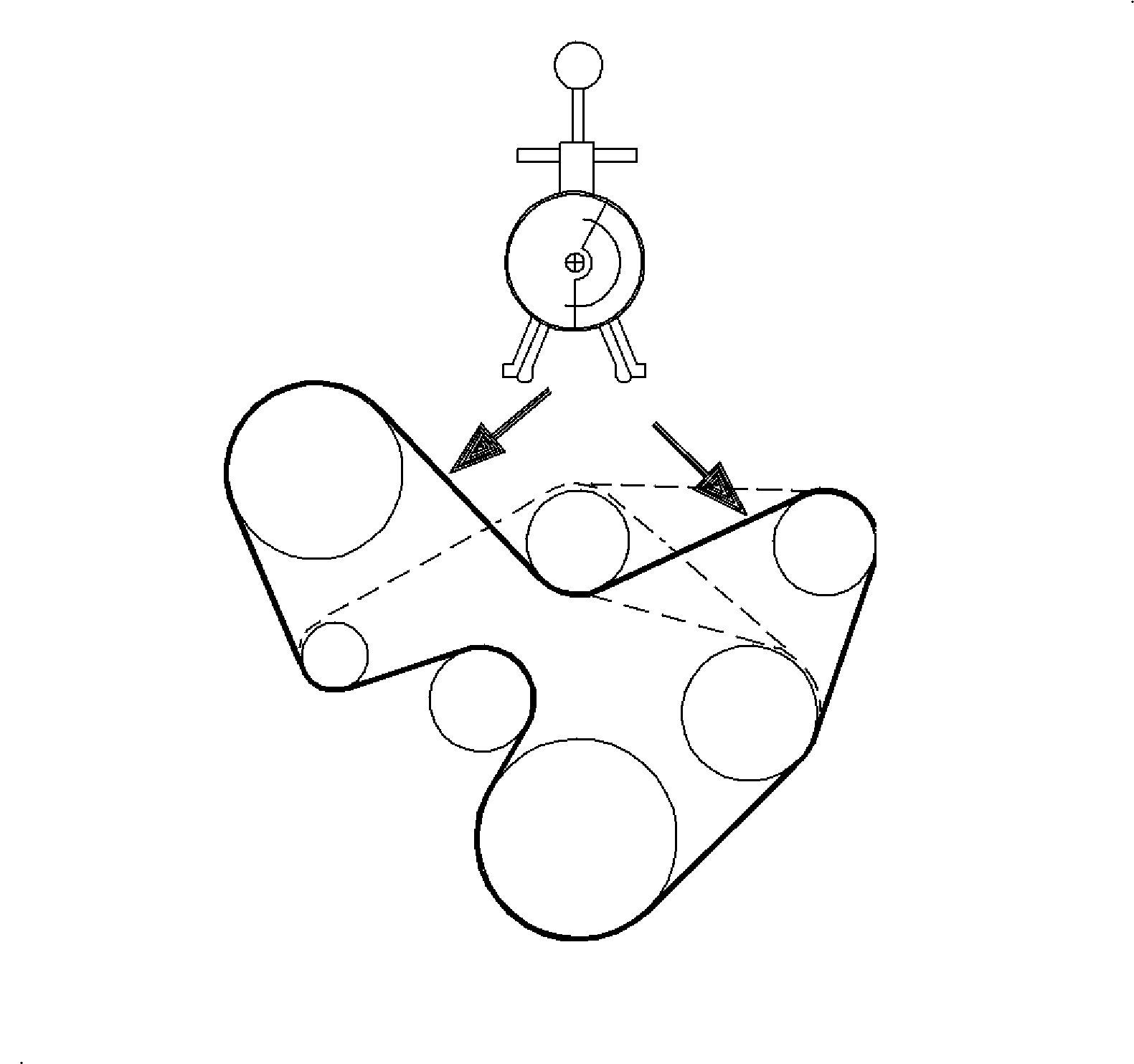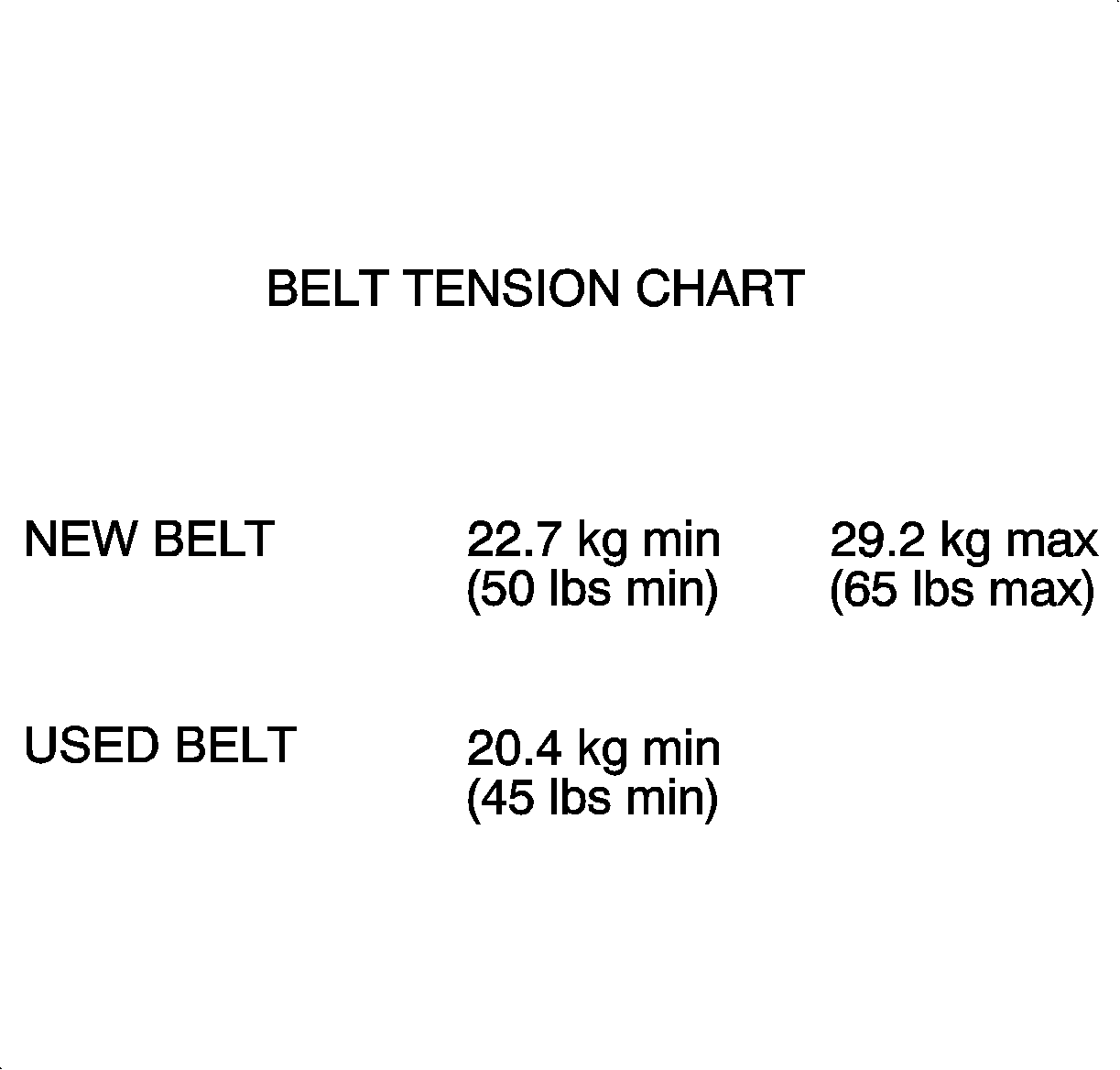For 1990-2009 cars only
Belt and Tensioner Load Inspection Precedure

The following procedure is to be used when the belt or tensioner is suspected of allowing pulleys to slip or causing any unusual belt noises.
- Warm up the engine for approximately 10 minutes with all accessories turned on. The steering wheel must be turned full left and right several times, if equipped with power steering.
- Shut the engine OFF.
- Using a 14 mm (9/16 in) wrench, depress the tensioner arm until the belt becomes loose on the pulleys. Slowly allow the tensioner to apply tension back on the belt.
- Using the calibrated drive belt tension gage or equivalent (OTC® OEM 1294 or equivalent), read and record the belt tension at mid span for the following drive combinations. This check can be performed on an engine assembly removed from the vehicle. It cannot be performed with the engine in the vehicle unless the upper engine mount is removed.
- Repeat the previous steps 3 times and record the information.
- Add the 3 readings together and divide the total by 3 as shown in the example:

Important: A Snap-on® tool, or equivalent wrench can be used to easily access the tensioner release bolt.

Important: The marking on the tensioner arm must fall within the operating range, 2 marks on the tensioner body. If the tensioner marks fall outside the operating range, the accessory drive belt must be replaced.
Important: The tensioner pulley must not be allowed to snap against the belt.


| • | Belt Tension equals 1+2+3/3 |
| • | Number of readings |
| • | Example: 54+58+52=164/3 |
| • | Belt tension equals 55 lbs. |
| • | Refer to belt tension chart for specifications. |
